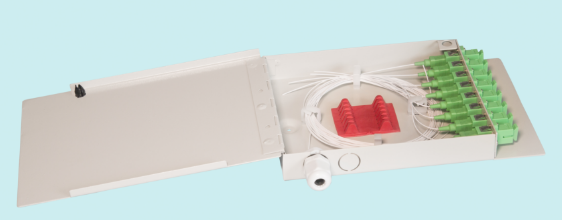

 |
What is fiber to the desktop (FTTD) exactly? It is a direct connection of fiber optic cabling from the network to a PC. It can be used in place of a standard copper network connection. Since the cost of fiber optic cable has come down over the last few years, there are more opportunities to consider it as a solution for network connectivity. There are many advantages to FTTD. Higher bandwidth is the first and most obvious advantage. Fiber can carry data at Gigabit, 10G or 100G speed. Basically, it is only limited by the speed of light. Copper on the other hand, can only carry 40 Gbps max. Installing FTTD will future-proof your network capabilities, and allow you to do things like stream high-definition video, and play video games competitively at fast network speeds. With Esports becoming more prevalent than ever, fiber to the desktop is an ideal solution. Many U.S. colleges and universities now offer competitive varsity E-sports (and even scholarships) to attract the best players. They have facilities designed specifically for competitive gaming with gamer pods consisting of a high speed PC. Gamers require a very fast, and very reliable network connection. A slight network glitch could cost a gamer a game. Have you seen viral videos of a gamer’s reaction when their network fails them? It is not a pretty sight.Installing FTTD in a gaming facility eliminates the worry about your network speed, and reliability. |
|
Distance is another obvious advantage.Copper cabling has a hard limit of 295 feet before you start experiencing network issues.Depending on the cable, fiber optic cabling can range from 1500 feet to several miles. There are situations where the telecom room in a building is just too far away,and running FTTD will be less expensive than adding a new telecom room and outfitting it with backbone cabling, network switches, and equipment racks. If keeping your network secure is a high priority, you may want to consider FTTD over copper. Copper is fairly easy to tap into and steal data.Fiber optic cable transmits signal through light, and does not emit an electromagnetic signal the way copper does. This makes it far more difficult for hackers to get into the network. Government buildings, financial institutions, healthcare facilities, military facilities, and other critical facilities with highly secure networks should consider FTTD. Implementing FTTD is relatively simple.It requires a fiber switch in the telecom room,a fiber optic cable run to a wall plate or floor box near the desktop,and a connection from your desktop’s fiber optic network interface card (NIC).Then you are up and running with a highly secure, superfast network connection. While FTTD is not necessarily the right solution for every building, there certainly seems to be an uptick in demand,especially during the current construction boom. Getting the telecommunications conversation started early in a project,and understanding the client’s network expectations are critical when considering FTTD. |
|
What is fiber optics?We're used to the idea of information traveling in different ways.When we speak into a landline telephone, a wire cable carries the sounds from our voice into a socket in the wall,where another cable takes it to the local telephone exchange.Cellphones work a different way: they send and receive information using invisible radio waves—a technology called wireless because it uses no cables. Fiber optics works a third way. It sends information coded in a beam of light down a glass or plastic pipe. It was originally developed for endoscopes in the 1950s to help doctors see inside the human body without having to cut it open first. In the 1960s, engineers found a way of using the same technology to transmit telephone calls at the speed of light (normally that's 186,000 miles or 300,000 km per second in a vacuum, but slows to about two thirds this speed in a fiber-optic cable). |
|
Optical technologyA fiber-optic cable is made up of incredibly thin strands of glass or plastic known as optical fibers; one cable can have as few as two strands or as many as several hundred. Each strand is less than a tenth as thick as a human hair and can carry something like 25,000 telephone calls, so an entire fiber-optic cable can easily carry several million calls. The current record for a "single-mode" fiber (that's explained below) is 178 terabits (trillion bits) per second—enough for 100 million Zoom sessions (according to fiber expert Jeff Hecht)! Fiber-optic cables carry information between two places using entirely optical (light-based) technology.Suppose you wanted to send information from your computer to a friend's house down the street using fiber optics. You could hook your computer up to a laser, which would convert electrical information from the computer into a series of light pulses. Then you'd fire the laser down the fiber-optic cable. After traveling down the cable, the light beams would emerge at the other end. Your friend would need a photoelectric cell (light-detecting component) to turn the pulses of light back into electrical information his or her computer could understand. So the whole apparatus would be like a really neat, hi-tech version of the kind of telephone you can make out of two baked-bean cans and a length of string! |
|
How fiber-optics worksLight travels down a fiber-optic cable by bouncing repeatedly off the walls.Each tiny photon (particle of light) bounces down the pipe like a bobsleigh going down an ice run. Now you might expect a beam of light, traveling in a clear glass pipe, simply to leak out of the edges. But if light hits glass at a really shallow angle (less than 42 degrees), it reflects back in again—as though the glass were really a mirror.This phenomenon is called total internal reflection. It's one of the things that keeps light inside the pipe. |
|